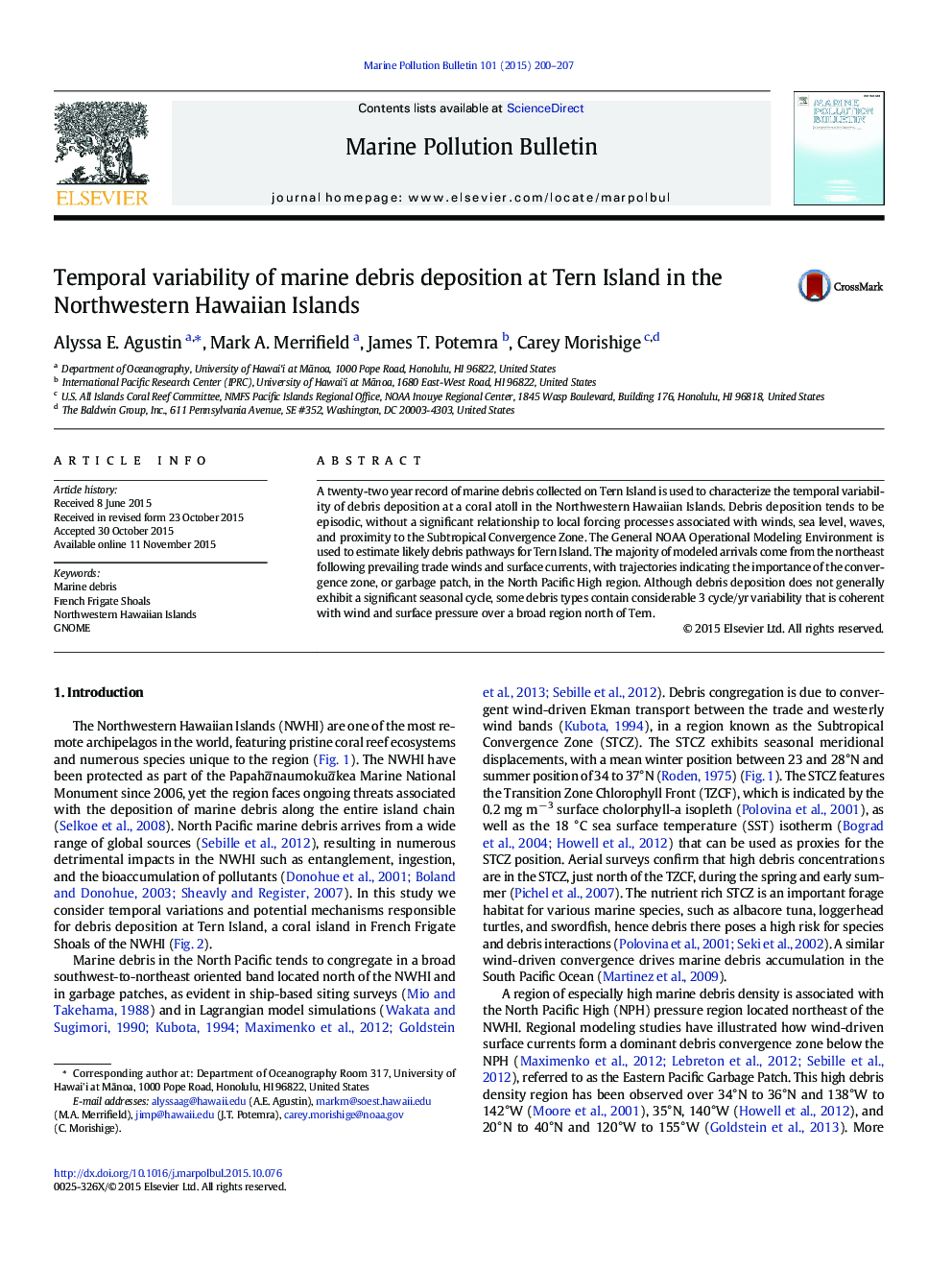| Article ID | Journal | Published Year | Pages | File Type |
|---|---|---|---|---|
| 4476603 | Marine Pollution Bulletin | 2015 | 8 Pages |
•Debris variability at Tern is uncorrelated with storms, winds, and currents.•A drift model suggests that debris comes primarily from the garbage patch region.•Plastic deposition at Tern Island exhibits a significant 3 cycles/yr periodicity.•These variations are coherent with regional winds and STCZ position.
A twenty-two year record of marine debris collected on Tern Island is used to characterize the temporal variability of debris deposition at a coral atoll in the Northwestern Hawaiian Islands. Debris deposition tends to be episodic, without a significant relationship to local forcing processes associated with winds, sea level, waves, and proximity to the Subtropical Convergence Zone. The General NOAA Operational Modeling Environment is used to estimate likely debris pathways for Tern Island. The majority of modeled arrivals come from the northeast following prevailing trade winds and surface currents, with trajectories indicating the importance of the convergence zone, or garbage patch, in the North Pacific High region. Although debris deposition does not generally exhibit a significant seasonal cycle, some debris types contain considerable 3 cycle/yr variability that is coherent with wind and surface pressure over a broad region north of Tern.
